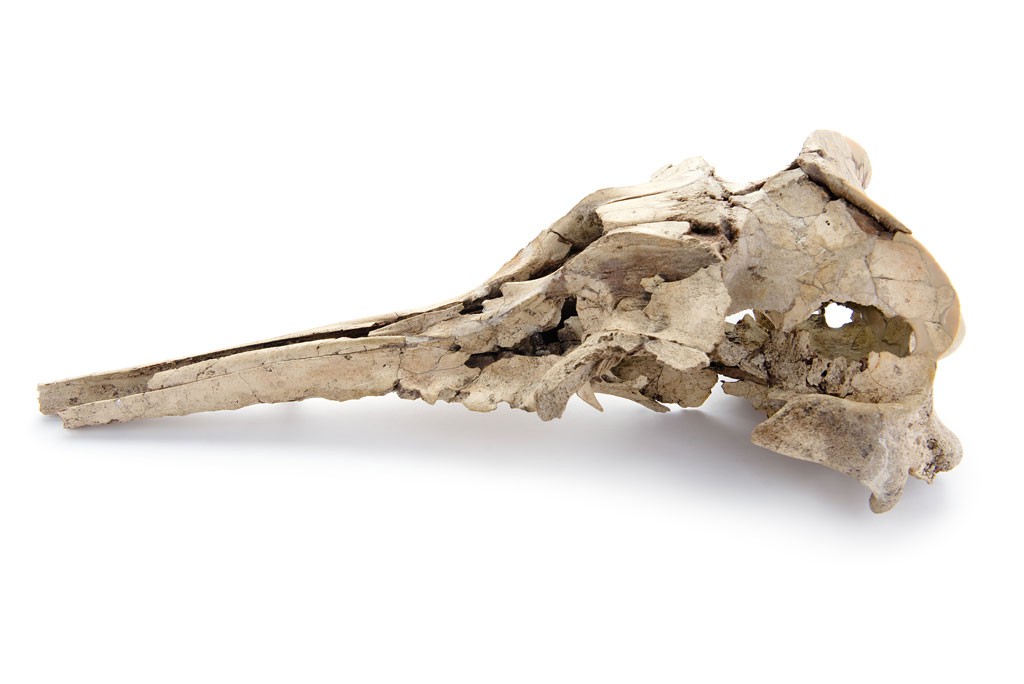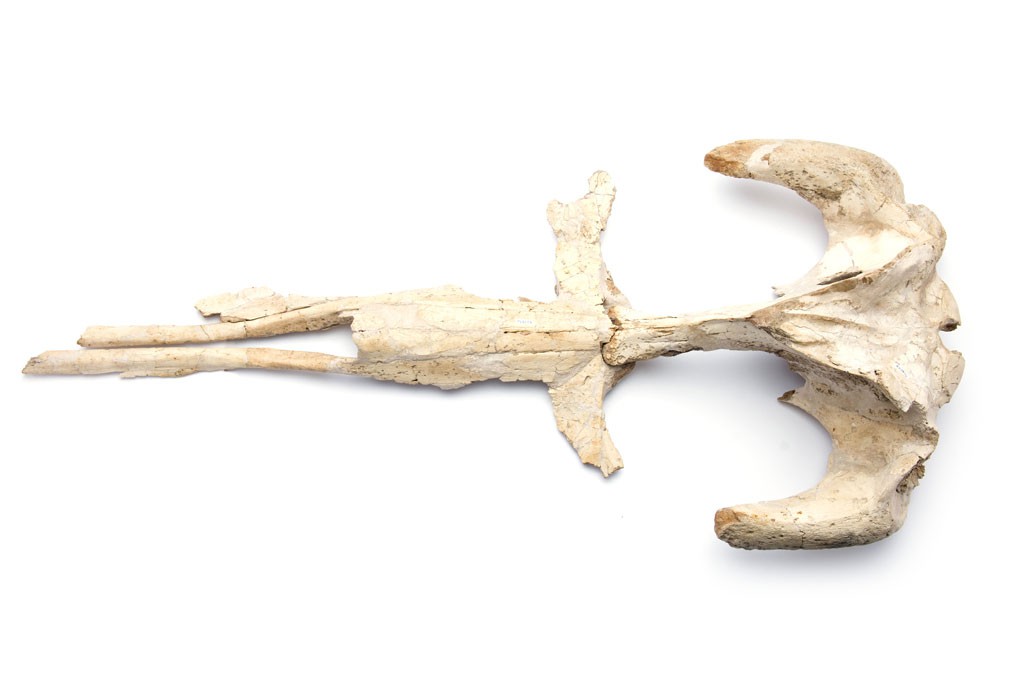Oligocene Whales: Evolution and Biodiversity
 |
Xenorophus Skull |
The Charleston Museum houses the largest collection of exquisite Oligocene whales in the world. The Oligocene epoch, a period of geologic time that spans from roughly 34 to 23 million years ago, is unarguably and important time period in regards to whale evolution and diversification. All of these Oligocene whales were collected in and around Charleston from two incredibly rich fossil formations: the Ashley formation (29.2 million years old) and the Chandler Bridge Formation (27.5 million years old). These two fossil beds together make up the richest deposit of Oligocene marine vertebrates ever described. From these two beds, there have been fossil specimens discovered that represent 25 new species of cetaceans (the scientific term for whales, dolphins, and porpoises).
 |
Xenorophus Skull |
The Order Cetacea contains two suborders; the Odontoceti, or toothed whales, and the Mysticeti, or baleen whales. Odontocete cetaceans include whales like the well-known Sperm Whale (Physeter macrocephalus) as well as dolphins and porpoises. All of the toothed whales share several characteristics in-common that aid in separating them from mysticetes. For example, all odontocete cetacean teeth are virtually identical. They also possess a fluid filled melon that is used for echolocation of prey, have a single blowhole opening, and are typically smaller than their mysticete relatives. Odontocetes are more closely related to primate cetaceans, a group commonly referred to as “archeoceti” meaning ancient cetaceans. The oldest archeocetes bridge the gap between the exclusively marine modern whales and terrestrial animals as they possess hind legs and other land-based adaptations. Current genetic research names the Hippopotamus as the closest living terrestrial relative of cetaceans.
 |
Eomysticetus Skull |
Mysticete whales do not extend as far back in the fossil record as odontocetes and have many unique adaptations such as either having a vestigial (reduced) melon (or completely lacking one) as well as having two blowhole openings. Mysticete whales began to diverge from their toothy relatives during the Eocene epoch, a geologic time period ranging from 56 to 33 million years ago. Five Oligocene representatives of early mysticete evolution were excavated in Dorchester County, three of which are formally described: Eomysticetus whitmorei, Eomysticetus carolinensis, and Micromysticetus rothausemi. These species are the earliest known mysticetes that completely lack teeth. Rather than using teeth to capture solitary prey, these three species (as well as modern mysticetes) relied solely on baleen to filter many small organisms out of the water for food. Baleen is a fibrous set of plates in the mouths of mysticetes that is similar in composition to human fingernails and rarely fossilizes. However, the absence of cavities in the jaw for tooth roots is evidence for true mysticetes being present during the Oligocene.
 |
Archaeomysticetus teeth: Incisors (left) & Molars (right) |
Earlier mystecetes relatives do possess some teeth; however the teeth are very different from modern odontocete teeth. Rather than possessing a single cusp, early mysticete teeth would possess several cusps and, like baleen, would act like a filter. The teeth in some early mysticetes even have large spaces between their teeth. This suggests these species may have been utilizing teeth and baleen simultaneously until modern mysticetes began to solely rely on baleen.

